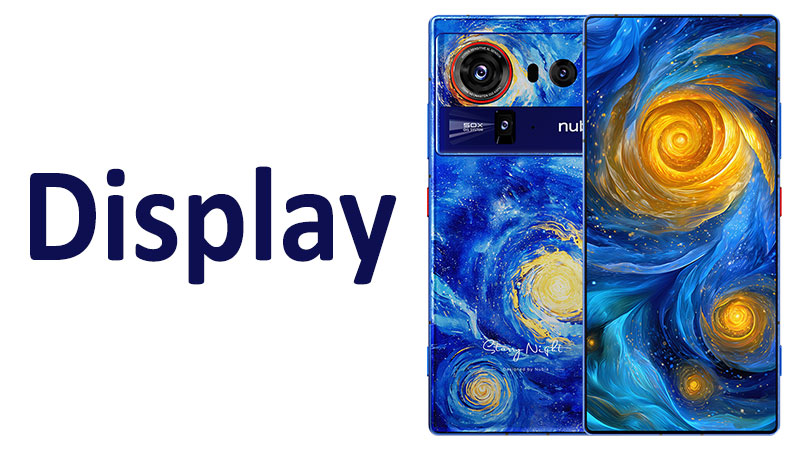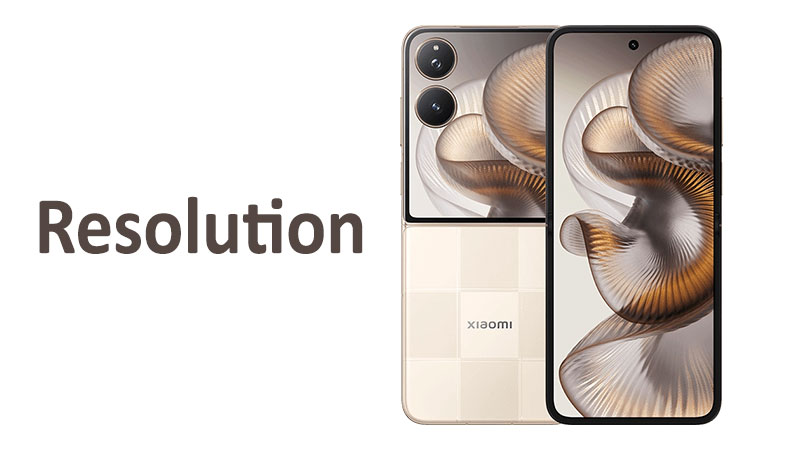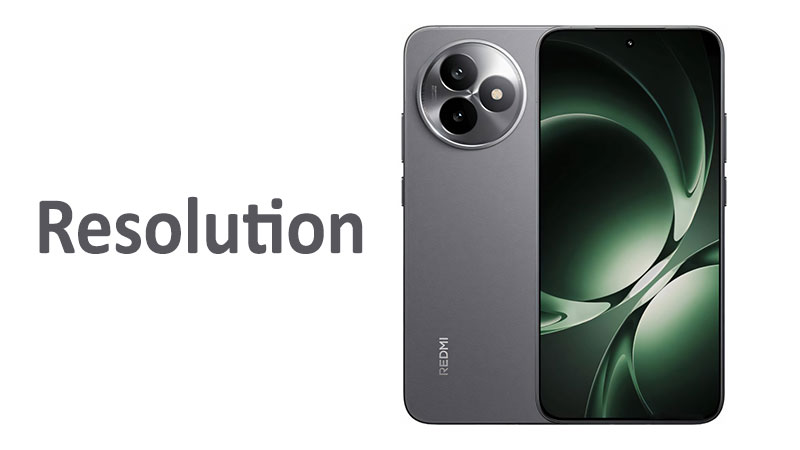The ZTE nubia Z80 Ultra display is a standout feature on this flagship device. This screen is the primary interface for all user interactions. Therefore, its quality directly impacts every moment you spend with the phone. From intensive gaming sessions to simple text messaging, the display performance is crucial. A high-quality display is non-negotiable for a modern premium smartphone. This article provides a comprehensive review of the ZTE nubia Z80 Ultra display. We will cover its advanced AMOLED panel, the blistering 144Hz refresh rate, and the industry-leading eye protection features. This detailed analysis will help prospective buyers make an informed purchasing decision.
Core Display Technology: AMOLED Excellence
The nubia Z80 Ultra employs a top-tier display panel. This screen is built upon proven AMOLED technology. AMOLED, or Active-Matrix Organic Light-Emitting Diode, is the gold standard for mobile devices. It allows each pixel to emit its own light. This results in perfect black levels. When a pixel is black, it is truly off. This technology contributes to stunning contrast ratios. Furthermore, it helps enhance overall color vibrancy. This panel offers a high-end visual foundation. This makes it suitable for demanding media and gaming.
Color Depth: The Power of 1 Billion Colors
The ZTE nubia Z80 Ultra display supports 1 billion colors. This specification is often referred to as 10-bit color depth. This massive color palette is a huge advantage over older 8-bit displays. An 8-bit panel can only show 16.7 million colors. The difference is significant, particularly in detailed imagery. The 10-bit color depth ensures smoother color transitions. It virtually eliminates color banding artifacts. These artifacts are visible steps in gradients, such as a sunset. Photographers and video editors benefit greatly from this accuracy. Ultimately, the 1 billion colors capability delivers a much richer visual fidelity. This level of color support is essential for true flagship status.
Flicker Reduction: 2592Hz PWM Dimming
Eye comfort remains a critical concern for modern smartphone users. The nubia Z80 Ultra addresses this with a high-frequency dimming solution. It utilizes 2592Hz Pulse Width Modulation (PWM) dimming. AMOLED panels use PWM to regulate brightness. They rapidly cycle the display on and off. Lower frequencies, around 480Hz or 960Hz, can cause eye strain. Sensitive users may experience headaches or discomfort due to this flicker. The 2592Hz frequency is extremely high. This high speed makes the flicker imperceptible to the human eye. Therefore, the ZTE nubia Z80 Ultra display offers superior eye protection. This makes the phone comfortable for extended reading or night usage.
Comparison: PWM Dimming vs. Competitors
The 2592Hz PWM dimming stands out in the market. Many competing flagship phones still employ lower PWM frequencies. Some rivals use rates around 1920Hz or less. The difference is measurable and noticeable to sensitive individuals. The nubia Z80 Ultra’s focus on high-frequency dimming is a strategic advantage. It prioritizes user comfort over raw specifications alone. This makes the Z80 Ultra an excellent choice for health-conscious users. Other brands are now adopting higher PWM rates. However, the 2592Hz rate positions the Z80 Ultra among the industry leaders in this niche.
Performance Metrics: Speed and Brightness
A premium display must deliver both responsiveness and visibility. The nubia Z80 Ultra offers aggressive specifications in both of these performance areas. The high refresh rate caters to gamers. The intense brightness ensures usability in any environment.
Ultra-Smooth Motion: The 144Hz Refresh Rate
The display features a rapid 144Hz refresh rate. This rate means the screen updates 144 times every second. This speed is a significant upgrade over the standard 60Hz rate. It even surpasses the 120Hz common in many flagship phones. The difference is most evident in fast-paced content. Scrolling is fluid and highly responsive. Gaming is transformative at 144 frames per second. Competitive mobile gamers especially benefit from this feature. It provides a smoother view of the action. Furthermore, it often translates into a competitive edge. This refresh rate makes the user experience feel incredibly immediate. It is a major selling point for power users and gamers.
Contrast: The Benefit of True Blacks
The AMOLED technology inherently provides infinite contrast. This is a powerful visual metric. Since black pixels are completely off, their luminance is zero. Dividing any brightness number by zero results in infinite contrast. This perfect contrast makes images look exceptionally vivid. It adds a sense of depth to videos and photos. Colors stand out against the deep, inky blacks. This effect is impossible to achieve with standard LCD technology. LCDs require a backlight, which always introduces some light leakage. The ZTE nubia Z80 Ultra display fully leverages the contrast superiority of AMOLED. This ensures a stunning, high-impact viewing experience.
Peak Brightness: 2000 Nits for Outdoor Use
The display achieves a peak brightness of 2000 nits. This measurement refers to the maximum luminance the screen can reach. It is particularly important for two scenarios. First, it ensures excellent outdoor readability. You can clearly see the screen even under direct sunlight. Second, it is vital for High Dynamic Range (HDR) content. HDR requires extreme bright points to look realistic. The 2000 nits peak allows small areas of light to shine intensely. This enhances the depth and realism of supported videos. While some rivals may exceed this figure, 2000 nits remains exceptionally bright. It is more than adequate for most real-world conditions. This high peak brightness confirms the phone’s flagship pedigree.
Size and Resolution: Clarity and Immersion
The physical dimensions of the display contribute to the immersive experience. Furthermore, the pixel arrangement dictates the overall sharpness. The nubia Z80 Ultra features a large screen with a high pixel density. This combination delivers both space and clarity.
The Expansive 6.85-inch Screen
The screen measures 6.85 inches diagonally. This provides a generous area for content consumption. The large size is ideal for movie watching and multi-tasking. It provides an immersive feel that smaller phones cannot match. The phone manages to keep its overall size manageable. The screen-to-body ratio is approximately 89.5%. This high percentage indicates very thin bezels around the display. Thin bezels contribute to the modern aesthetic. They maximize the space dedicated to content. However, a 6.85-inch display can be difficult for one-handed operation. Users prioritizing compactness might find the size challenging. For media lovers, the large screen is a definitive plus.
Resolution and Pixel Density: Sharp and Detailed
The display resolution is 1216 x 2688 pixels. This proprietary resolution is slightly higher than standard Full HD+. It provides a pixel density of approximately 431 pixels per inch (ppi). A density of 431 ppi is extremely high. It ensures text and fine details appear razor-sharp. Individual pixels are virtually invisible at typical viewing distances. This high density provides a stunning level of clarity for images. It is also excellent for reading small fonts. The chosen resolution strikes a good balance. It provides superb sharpness without the excessive power draw of a Quad HD+ (1440p) panel. This efficiency is a practical benefit for daily use.
Aspect Ratio and Design
The screen utilizes an aspect ratio close to 20:9. This ratio is tall and narrow. This shape is optimized for vertical scrolling and web browsing. It also enhances the experience of running two apps side-by-side. The phone likely uses a completely uninterrupted display design. ZTE nubia Ultra models often feature an Under-Display Camera (UDC). This technology hides the selfie camera beneath the screen. This creates a completely full-screen experience. The 89.5% screen-to-body ratio is impressive. However, it does not fully reflect the seamless, notch-free experience of a UDC design. This is a key aesthetic advantage over phones with visible notches or punch-holes.
Media Support: HDR and Cinematic Experience
The best displays go beyond just brightness and speed. They must also support the latest media standards. This ensures compatibility with premium streaming content. The Z80 Ultra display is fully equipped for modern media consumption.
HDR10 Support: Enhanced Video Quality
The display supports the HDR10 standard. HDR stands for High Dynamic Range. HDR10 is a widely adopted standard for high-quality video. It provides a much wider range between the darkest blacks and the brightest whites. This results in videos that look more vibrant and realistic. Streaming services like YouTube, Netflix, and Disney+ use HDR10 extensively. The 2000 nits peak brightness works in tandem with HDR10. It allows the phone to accurately display bright highlights. This creates a more dynamic and impactful viewing experience. While some rivals support Dolby Vision, HDR10 remains a strong, ubiquitous standard.
Color Calibration and Accuracy
The 1 billion colors are useless without proper calibration. ZTE ensures the Z80 Ultra display is factory-calibrated for accuracy. Users can expect colors to be true-to-life in the default ‘Natural’ mode. Most phones offer various display modes. These usually include a ‘Vivid’ mode for punchier colors. They also offer a ‘Pro’ or ‘Natural’ mode for color-accurate work. The Z80 Ultra gives users the flexibility to choose. The AMOLED panel provides full coverage of key color spaces. These include DCI-P3 for cinematic content and sRGB for web content. This accuracy is vital for professional photo and video creators.
Comparisons and Market Context
Understanding the market positioning of the nubia Z80 Ultra display is important. We will compare it to its likely predecessor and its main rivals. These comparisons highlight the phone’s strengths and weaknesses.
Z80 Ultra vs. Predecessor Display (Hypothetical Z70 Ultra)
The previous generation, the hypothetical Z70 Ultra, likely focused on similar features. It may have featured a 120Hz refresh rate. It probably used a lower PWM dimming frequency. The Z80 Ultra represents an upgrade in two key areas. The jump from 120Hz to 144Hz provides a noticeable improvement in motion smoothness. This is a significant edge for gaming. Secondly, the 2592Hz PWM dimming is a huge step forward for eye comfort. The Z70 Ultra might have used a lower, more flicker-prone rate. The bump to 2000 nits from a lower peak brightness is also a key improvement. The Z80 Ultra display is a clear generational improvement across speed and comfort metrics.
Z80 Ultra vs. Competitors (Gaming vs. Mainstream)
The nubia Z80 Ultra is often marketed toward gamers. Its display specifications reflect this focus. Most mainstream flagships, like Samsung or Google phones, cap the refresh rate at 120Hz. The 144Hz rate of the Z80 Ultra directly targets the dedicated gaming audience. Conversely, many mainstream flagships use LTPO technology. LTPO allows dynamic scaling from 1Hz up to 120Hz. The Z80 Ultra uses a standard AMOLED panel. This means it lacks the superior power efficiency of LTPO. The Z80 Ultra chooses raw speed over maximum power efficiency. However, the Z80 Ultra beats many rivals with its 2592Hz PWM dimming. It offers a more comfortable view than some of the top-selling competitors.
Pros and Cons: A Balanced Display Assessment
Evaluating any piece of hardware requires a balanced look at its strengths and weaknesses. The Z80 Ultra display has many compelling attributes. However, certain design choices result in minor drawbacks.
Advantages of the Z80 Ultra Display
The screen offers several outstanding benefits. The 144Hz refresh rate provides unparalleled motion clarity. This is perfect for gaming and daily interaction. The 2592Hz PWM dimming ensures superior eye comfort. This is a major plus for heavy users. The 1 billion colors support delivers professional-grade color accuracy. The 2000 nits peak brightness guarantees excellent visibility outdoors. Finally, the large 6.85-inch size and high ppi create an immersive visual experience. The potential use of an Under-Display Camera (UDC) also creates a truly distraction-free viewing canvas.
Drawbacks and Limitations
The display does have a few limitations based on current technology. First, the lack of LTPO technology is a notable drawback. This means the 144Hz rate is less power efficient than an LTPO 120Hz panel. Users might experience faster battery drain during consistent high-refresh-rate use. Second, the resolution is 1216p. While very sharp, it is not the highest available 1440p resolution found on some competing phones. Third, the 2000 nits peak is competitive but not class-leading. Some flagships now exceed 2500 nits. This means the Z80 Ultra might struggle slightly in the absolute brightest, most demanding HDR scenes.
Essential Buying Advice for Consumers
The ZTE nubia Z80 Ultra display is a highly specialized piece of technology. Buyers need to determine if its specific features align with their usage habits. The display is clearly optimized for a particular kind of user. This focus makes the decision easier for some buyers.
Who Should Buy This Phone?
This phone is an ideal choice for mobile gamers. The 144Hz refresh rate provides a crucial advantage in responsiveness and visual smoothness. It is also perfect for media consumers. The large 6.85-inch AMOLED screen and HDR10 support offer a cinematic experience. Users sensitive to screen flicker should prioritize this display. The 2592Hz PWM dimming offers one of the best solutions for eye comfort. People who spend hours reading or scrolling will find this beneficial. Buyers must prioritize smoothness and eye comfort over maximum battery efficiency.
Optimizing the Screen Experience
Users can customize the display settings for best results. For daily use, keep the refresh rate at the default maximum. This ensures the best possible smoothness. When battery life is critical, users can manually switch to 60Hz. This will save significant power. Utilize the available color temperature controls. Adjusting the white balance can further enhance eye comfort. Selecting the ‘Natural’ color mode provides the best color accuracy for photography. The ‘Vivid’ mode is better for general video entertainment. The phone’s software should also allow for customization of the 144Hz setting. Users should ensure their favorite games are utilizing the full 144Hz capability.
Final Summary and Verdict
The ZTE nubia Z80 Ultra display is a powerful, highly capable panel. It stands out by offering a superb balance of performance and comfort features. The 6.85-inch AMOLED screen delivers perfect blacks and high contrast. The 1 billion colors support ensures excellent visual fidelity across all content types. Crucially, the 144Hz refresh rate elevates motion smoothness beyond many rivals. This makes it an exceptional device for mobile gaming.
The phone’s commitment to user health is commendable. The 2592Hz PWM dimming frequency offers effective flicker reduction. This is a huge benefit for long-term usage. While the lack of LTPO technology is a minor power-efficiency trade-off, the Z80 Ultra delivers raw performance. The 2000 nits peak brightness and HDR10 support complete the package. The ZTE nubia Z80 Ultra display is a phenomenal choice. It is a fantastic screen for gamers and media enthusiasts who value eye comfort and speed.
Frequently Asked Questions
What is the maximum refresh rate of the Z80 Ultra display?
The ZTE nubia Z80 Ultra display offers a maximum refresh rate of 144Hz. This provides exceptionally smooth motion for scrolling and gaming.
Does the Z80 Ultra display support HDR content?
Yes, the display supports the HDR10 standard. This allows for an enhanced dynamic range and superior contrast in supported videos.
Is the screen easy to read in direct sunlight?
Yes, the display has a high peak brightness of 2000 nits. This ensures the screen remains clearly visible and readable even in bright outdoor conditions.
What is 2592Hz PWM Dimming and why is it important?
2592Hz PWM Dimming is a high-frequency method of controlling brightness. It is important because it virtually eliminates screen flicker. This greatly reduces eye strain and fatigue for users.
Does the Z80 Ultra use an LTPO panel?
No, the ZTE nubia Z80 Ultra uses a standard AMOLED panel. It does not include the LTPO technology for dynamically scaling the refresh rate down to 1Hz.



